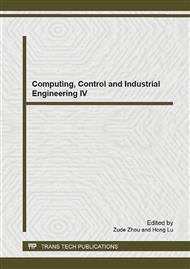p.541
p.546
p.550
p.555
p.559
p.565
p.572
p.577
p.581
The Analysis of Abnormal Phenomena of GEO Satellites Solar Array
Abstract:
Satellites solar array provides sustainable and reliable energy for satellite by changing the solar energy into electrical energy in order to ensure the normal working of the satellite. The working status of solar array is directly related to the satellites normal running in orbit. The thesis summarized the normal trend of the GEO satellites solar array output power, through comparing the real output power of a certain satellites solar array with the normal trend, and detected four abnormal phenomena of solar array output power. Then the thesis analyzed the reasons, and made related suggestions.
Info:
Periodical:
Pages:
559-562
Citation:
Online since:
October 2013
Authors:
Price:
Сopyright:
© 2013 Trans Tech Publications Ltd. All Rights Reserved
Share:
Citation:



